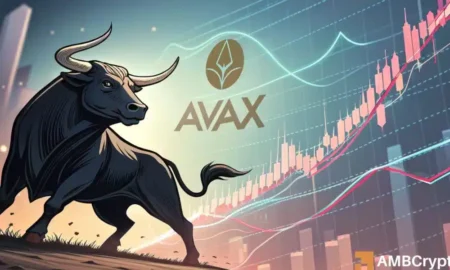Ethereum’s Accumulation-Led Rally: Analyzing Its Outperformance Over Bitcoin
In recent months, Ethereum (ETH) has embarked on an impressive accumulation-led rally, echoing the price movements witnessed in Bitcoin (BTC) prior to its all-time high (ATH). Currently, Ethereum finds itself on a path to recover approximately 40% of its value, raising the crucial question of whether it can achieve this goal before the conclusion of the fourth quarter. As we delve deeper into the reasons behind Ethereum’s performance, we will explore its strategic leverage of market volatility, the impact of institutional capital, and the broader implications on price discovery.
Ethereum’s Promising Start to Q3
The performance of Ethereum during the early days of Q3 has been remarkable. With an ROI of 18.63%, starting from an opening price of $2,468, Ethereum has easily surpassed Bitcoin’s return—more than double that figure over the same period. This outperformance isn’t merely a reflection of market readiness; it marks a significant structural change in investor behavior, signaling a divergence in how these two leading cryptocurrencies are currently viewed by the market.
The Role of Volatility in Price Dynamics
Bitcoin’s recent surge to its third ATH showcases a change in market momentum, heavily influenced by structural positioning. Presently, around 10.2% of Bitcoin’s total supply is owned by institutional investors, governments, and corporations who are less likely to respond dramatically to price fluctuations. This trend reinforces the volatility that fosters further accumulation. Each phase of volatility typically results in more Bitcoin being locked away, strengthening the potential for upward price movements. For Ethereum, a similar structural strategy is being deployed, with institutional investors harnessing price fluctuations to create opportunities for accumulation.
Institutional Demand Affects Ethereum Supply
A critical factor in Ethereum’s accumulation narrative lies within its supply dynamics. Recent data indicate that within the last 30 days, only 73,202 ETH were newly issued. Comparatively, Ethereum ETFs experienced a staggering 725,000 ETH in net inflows, representing a tenfold demand compared to the supply. Interestingly, this spike in institutional buying occurred during a notable price correction of over 20%, further emphasizing the strategic approach taken by these investors. As retail sentiments wane during price corrections, institutional players seem poised to exploit these downturns, nurturing an environment conducive to long-term growth.
Navigating Through Price Discovery
The structural shifts in Ethereum’s market landscape are vividly reflected in its price action. Since June 22, ETH has notably surged by 40%, contrasting with Bitcoin’s 20% gain during the same timeframe. This movement has allowed Ethereum to decisively breach the $2,800 resistance level, effectively reclaiming price levels last observed in early February. The resilience shown during moments of volatility indicates institutional capital’s increasing influence, as Wall Street giants, including Goldman Sachs, signal deepening conviction through substantial exposure to Ethereum.
Institutional Conviction and Price Acceleration
The rising presence of institutional interest in Ethereum suggests a transformative trend for the cryptocurrency. The top five holders of ETH-related assets now command more than $288 million worth of exposure, which reflects a growing confidence in Ethereum’s potential. As institutions continue to invest heavily despite market fluctuations, their buying activity converts volatility into a form of supply-side pressure. This dynamic aids in pushing Ethereum closer to its ATH, potentially closing the remaining gap faster than market anticipations.
Conclusion: A Transformative Phase for Ethereum
As Ethereum continues to navigate this new phase of price discovery, it’s essential to monitor the evolving dynamics between institutional demand and market fluctuations. The effective management of volatility is not just a defensive mechanism but a strategic advantage that many institutions are now recognizing. With significant movements capturing investor interest and structural shifts favoring accumulation, Ethereum may be on the brink of closing the 40% gap to its all-time high sooner than expected. Thus, for both retail and institutional investors alike, attention should remain fixed on how Ethereum’s strategy unfolds in the following months.
In summary, Ethereum’s current trajectory showcases its potential as a competitive alternative to Bitcoin, emphasized by its sophisticated handling of market conditions and institutional backing that may significantly reshape its future.
















